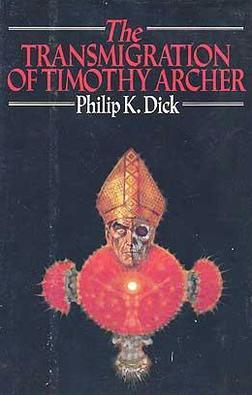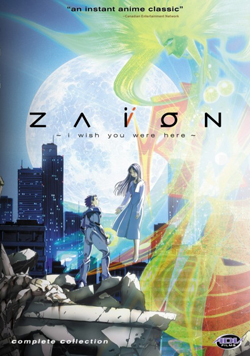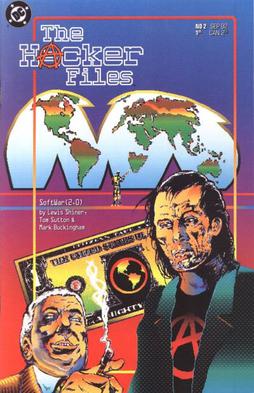
The Transmigration of Timothy Archer is a 1982 novel by American writer Philip K. Dick. As his final work, the book was published shortly after his death in March 1982, although it was written the previous year.

Babesiosis or piroplasmosis is a malaria-like parasitic disease caused by infection with a eukaryotic parasite in the order Piroplasmida, typically a Babesia or Theileria, in the phylum Apicomplexa. Human babesiosis transmission via tick bite is most common in the Northeastern and Midwestern United States and parts of Europe, and sporadic throughout the rest of the world. It occurs in warm weather. People can get infected with Babesia parasites by the bite of an infected tick, by getting a blood transfusion from an infected donor of blood products, or by congenital transmission . Ticks transmit the human strain of babesiosis, so it often presents with other tick-borne illnesses such as Lyme disease. After trypanosomes, Babesia is thought to be the second-most common blood parasite of mammals. They can have major adverse effects on the health of domestic animals in areas without severe winters. In cattle, the disease is known as Texas cattle fever or redwater.
The spread of HIV/AIDS has affected millions of people worldwide; AIDS is considered a pandemic. The World Health Organization (WHO) estimated that in 2016 there were 36.7 million people worldwide living with HIV/AIDS, with 1.8 million new HIV infections per year and 1 million deaths due to AIDS. Misconceptions about HIV and AIDS arise from several different sources, from simple ignorance and misunderstandings about scientific knowledge regarding HIV infections and the cause of AIDS to misinformation propagated by individuals and groups with ideological stances that deny a causative relationship between HIV infection and the development of AIDS. Below is a list and explanations of some common misconceptions and their rebuttals.
The Legacy Virus is a fictional plague appearing in American comic books featuring the X-Men published by Marvel Comics. It first appeared in an eponymous storyline in Marvel Comics titles, from 1993 to 2001, during which it swept through the mutant population of the Marvel Universe, killing hundreds, as well as mutating so that it affected non-mutant humans as well.

Mount Dragon is a 1996 techno-thriller novel by Douglas Preston and Lincoln Child. The action primarily follows Guy Carson and Susana Cabeza de Vaca, two researchers employed by the corporation GeneDyne and stationed at the Mount Dragon facility in New Mexico. In attempting to engineer a therapeutic hormone to prevent all forms of influenza, GeneDyne has accidentally created a frighteningly virulent disease. Meanwhile, Carson and Cabeza de Vaca face a much more immediate threat at the Mount Dragon facility—from their own colleagues.
The use of nanotechnology in fiction has attracted scholarly attention. The first use of the distinguishing concepts of nanotechnology was "There's Plenty of Room at the Bottom", a talk given by physicist Richard Feynman in 1959. K. Eric Drexler's 1986 book Engines of Creation introduced the general public to the concept of nanotechnology. Since then, nanotechnology has been used frequently in a diverse range of fiction, often as a justification for unusual or far-fetched occurrences featured in speculative fiction.

Blood on the Moon (1984) is a crime novel by James Ellroy. It is the first installment of the Lloyd Hopkins Trilogy. It was followed by Because the Night (1984) and Suicide Hill (1985). Although the novels are written in multiple perspectives and narrated omnisciently, the main character in all three is Lloyd Hopkins. Ellroy has stated that Blood on the Moon is his only novel that he is embarrassed by.

Zaion: I Wish You Were Here is a four-episode Japanese science fiction original net animation (ONA) released by Gonzo in 2001. The story is set in the near future, when Earth is threatened by a spaceborne virus that turns humans into violent creatures and enhanced soldiers are fighting a war against the creatures in order to ensure the survival of the human race. The series was directed by Seiji Mizushima and written by Natsuko Takahashi. Music for the series was composed by Kenji Kawai.

The Martians, also known as the Invaders, are the race of extraterrestrials and the main antagonists from the H.G. Wells 1898 novel The War of the Worlds. Their efforts to exterminate the populace of the Earth and claim the planet for themselves drive the plot and present challenges for the novel's human characters. They are notable for their use of extraterrestrial weaponry far in advance of that of mankind at the time of the invasion.
A techno-organic virus is a fictional virus appearing in American comic books published by Marvel Comics. In the comics, the T-O virus transforms organic material into techno-organic material, which resembles both machinery and living tissue. All techno-organic cells function like independent machines, and carry both the virus and all information on their carriers. This includes memories and appearance, allowing a damaged techno-organic being to rebuild itself from a single cell.

Trinity Blood is a series of Japanese light novels written by Sunao Yoshida with illustrations by Thores Shibamoto and originally serialized in The Sneaker. Set 900 years after an apocalyptic war between humans and vampires, the series focuses on the ongoing cold war between the Vatican, the human government, and the "New Human Empire", the government of the vampiric Methuselah. Fighting on the Vatican's side is Abel Nightroad, a Crusnik—a vampire that feeds on vampires. The novels blend science fiction, fantasy, and political intrigue, with some in the Vatican and the Empire striving for peace, and the Rosen Kreuz Order doing anything in its power to stop it.

The Hacker Files is a twelve issue DC Comics mini-series published from August 1992 to July 1993. It was written by Lewis Shiner and illustrated by Tom Sutton.

Crossed is a comic book written by Garth Ennis and drawn by Jacen Burrows, published by Avatar Press. Following volumes Crossed: Family Values, Crossed 3D, and Crossed: Psychopath were written by David Lapham. A new series, Crossed: Badlands, was written and drawn by rotating creative teams. The franchise has also spawned two webcomics: Crossed: Wish You Were Here, which ran from 2012 to 2014, and Crossed: Dead or Alive, which began syndication in November 2014.

Flu is a 2013 South Korean medical disaster film written and directed by Kim Sung-su, about an outbreak of a deadly strain of H5N1 that kills its victims within 36 hours, throwing the district of Bundang in Seongnam, which has a population of nearly half a million people, into chaos. It stars Jang Hyuk, Soo Ae and Park Min-ha.

Sacamantecas or mantequero is the Spanish name for a kind of bogeyman or criminal characterized by killing for human fat.

The Girl with All the Gifts is a science fiction book by M. R. Carey, published in June 2014 by Orbit Books. It is based on his 2013 Edgar Award-nominated short story Iphigenia In Aulis and was written concurrently with the screenplay for the 2016 film. It deals with a dystopian future in which most of humanity is wiped out by a zombie-like fungal infection.
Biological warfare (BW)—also known as bacteriological warfare, or germ warfare—has had a presence in popular culture for over 100 years. Public interest in it became intense during the Cold War, especially the 1960s and '70s, and continues unabated. This article comprises a list of popular culture works referencing BW or bioterrorism, but not those pertaining to natural, or unintentional, epidemics.
Çalıkuşu is a 2013 Turkish romantic drama television series aired on Kanal D that is based on the novel of the same name for the fourth time. The series was cancelled before its completion.











